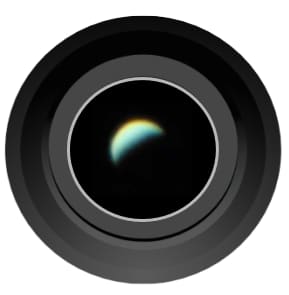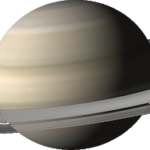venus through a telescope

For many amateur astronomers, Venus is a relatively good planet to observe with a telescope because it is easy to locate it in the night sky. Most of the time, Venus is the third brightest celestial object after the moon and the sun! Some experienced amateur astronomers can even observe Venus with their telescope during the day. This is just how luminous this planet is!






How to find Venus in the night sky
Sometimes known as “evening star" or "morning star”: Venus shines so intensely that it is often the first shiny dot to appear in the evening sky after sunset, or the last to disappear at dawn. When viewed with the naked eyes, Venus looks like a star. But unlike stars that emit their own light, Venus reflects the light of the Sun.
There are a few things to consider before trying to observe Venus through your telescope.
- When you follow the path of the Sun in the sky, this imaginary line is called the ecliptic. The ecliptic changes slightly throughout the year, with its highest position occurring at the summer solstice, and the lowest position happening at the winter solstice.
- Venus orbits much closer to the sun than we do which means that from our point of view, Venus is never really too far from the Sun (halfway across the sky from the Sun at most).
This should give you an indication of how easy it is to find it in the sky at sunset or at dawn. You just need to follow the Sun! In the northern hemisphere, Venus will be an "evening star" (meaning visible after sunset) during the first part of the year. It will reach its greatest brightness in March. Later on, it will become a "morning star" (meaning it will rise at dawn shortly before the Sun) and reach its greatest brightness in December for the second time in 2021.

Venus shines brightly in the night sky just after sunset. That's usually the best time to start observing it with your telescope.
How to find Venus with your phone
If you are just starting out in astronomy, it is not always easy to identify the constellations, the stars or the planets in the sky. If that's your case, know that you can now easily locate Venus (or any other celestial object) with the help of your smartphone. Many astronomy apps for mobile can help you find planets, stars, comets and even satellites in just a few seconds.
Simply hold your phone in front of you and move it across the sky – the application will display a real-time overlay image of what's in the sky.
There is a lot of stuff up there. If you are still struggling to find what you are looking for, most apps will have a search function that will point you in the right direction.
When is the best time to observe Venus in a telescope??
The best time to observe any planets is when it is close to us on Earth. Venus is the second closest planet to the Sun, while Earth is in the third position. This configuration makes it impossible to see Venus through a reflecting or a refracting telescope in the middle of the night. This is because Venus closely follows or precedes the Sun in its path across the sky and, as a result, it is only visible at the beginning or end of the night.

From our point of view on Earth, an inner planet never moves very far away from the Sun. But when said planet is positioned just at the perfect angle between the Earth and the Sun, it is called the greatest elongation and in the case of Venus, it is about 46 degrees. This can happen once or twice a year, but some years there are none.
Why is this important? Well, the greatest elongations represent the best opportunities to observe Venus with a telescope as the planet will set in the horizon about 3 hours after sunset (East greatest elongation) or rise about 3 hours before sunrise.
When is Venus at its brightest in the sky?
Venus usually reaches its greatest brightness about twice a year. In 2021, Venus will gradually become brighter starting from early January until March when the planet will reach its first greatest brightness of the year at mag -3.9. Its luminosity will then decrease for about 3 months. Venus's luminosity will perk up again from mid-July and reach its second peak of the year in December, at a magnitude of -4.88.

This year, the best time to observe Venus with a telescope or steadily-held binocular is around October 29, shortly after sunset.
What type of telescope do you need to see Venus from Earth?
You can see Venus with any type of telescope or astronomical binoculars. The optical design is not that important for this specific planet, however, Dobsonian telescopes are known to be great tools for observing the planets. If you own any other type of reflecting or refracting telescope, that's fine too as long as they have an aperture of at least 2,5 inch (62mm) and a long focal length (800mm or more). You will enjoy a much better view if you have a larger aperture, but this is to say that you can see Venus even with a telescope for beginners.
A telescope magnification of 40x per inch of aperture is generally considered sufficient to see Venus satisfyingly. You can try to use a Barlow lens if the atmosphere is stable.
Truth to be told, Venus is a notoriously difficult planet to observe because of its high luminosity. Due to its proximity to our star, combined with the planet's thick and highly reflective atmosphere, Venus reflects a lot of light from the sun.
This can cause a glare so intense that Venus may appear as a blob of light through the lens of your telescope. You can, however, reduce the glare by mounting a moon filter onto the eyepiece of your telescope.
The other problem is that Venus will always be positioned quite low on the horizon, whether you observe it at dusk or dawn. This means that the light coming from the planet and entering your telescope will travel through lots of gases, particles and atmospheric turbulence. This can negatively affect the quality of the image seen through the eyepiece. Pay attention to the weekly weathercast in your area and choose your observing time carefully.
Related: Check out our guide on how to choose your first telescope.
What does Venus looks like through a telescope?
Any celestial objects orbiting closer to the sun than the observer (us) will display phases. When using his ancient telescope almost 400 years ago, Galileo discovered that Venus went through phases, just like our dear Moon.

If you observe Venus every month, you will see it gradually transform from full to gibbous, then to Crescent until it disappears completely during the New Venus phase.
And that's about it...
Unfortunately, Venus is not a very rewarding target to observe if you are hoping to see any surface detail... Observing Jupiter with your telescope is much more interesting in that regard. Venus is permanently covered by a thick cloud layer... so if there are any details to see, they will be very subtle and probably impossible to resolve even with the most expensive telescope. Most amateur astronomers can therefore expect to only be able to admire the phases of the planet through their backyard telescope.
Below are some images of what Venus looks like - note that these images have been stacked, which means that many shots have been taken and processed digitally. This gives you an idea of what you can expect, although the real-time view will probably be less sharp depending on the atmospheric conditions and the quality of your telescope.



The best planetary filters for viewing Venus
When observing Venus through a telescope, it is important to reduce glare as much as possible to get the best view. If the planet is particularly bright, a moon filter usually helps greatly. A red or dark blue colored filter can help reveal the upper clouds of the planet in greater detail. Some observers recommend a yellow or green colored filter to increase overall contrast while reducing glare.
More planetary observing guides

Jupiter

Mars

Saturn

Uranus
Frequently Asked Questions
Can Venus be seen at night with a telescope?
Depending on the time of the year, Venus can be seen with a telescope during the night for a few hours after sunset or before sunrise.
Can you see venus without a telescope?
Venus can easily be seen without a telescope as it is often one of the brightest objects in the night sky. To the naked eye, the planet will look like a shining star but less twinkly.
What type of telescope do I need to see Venus?
Unless you want to photograph it, any type of telescope can let you see planet Venus as long as the aperture is at least 2.5 inches (62 mm).
Interesting Fact About Venus
It takes Venus about 224 days to make a complete orbit around the sun, but 243 days to make a complete rotation on its axis - which means that a day on Venus lasts longer than a year. In addition, the planet also rotates in the opposite direction compared to the other planets in the solar system.
Icon source: Icon8
























